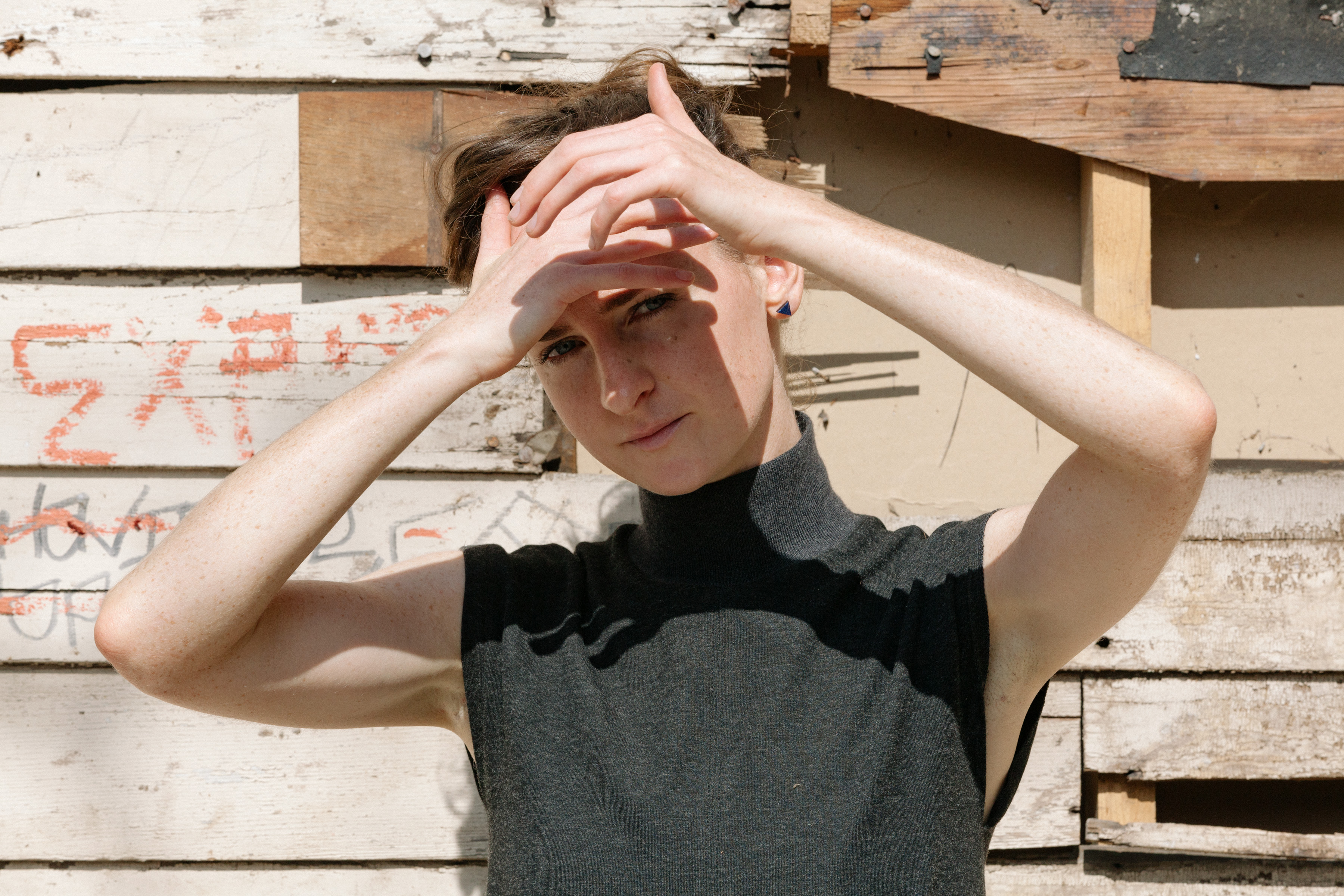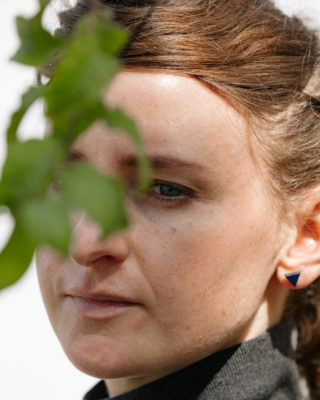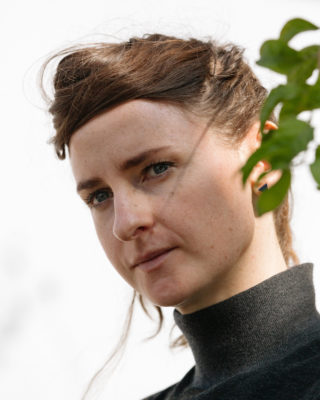Katie Gately is making maximalist pop using the sounds of Espresso makers, refrigerators and toothbrushes
The Los Angeles-based sound recordist can make your air conditioning unit sound like Madonna.

When you cleaned your teeth this morning or ordered coffee from a shop on the way to work, did you stop to listen to the sounds the machines around you were making? You probably wouldn’t think that the buzz of a toothbrush or the clatter of a coffee maker was particularly musical, but LA-based field recordist and electronic musician Katie Gately has a knack for finding tones in everyday objects.
“I have an espresso maker and that vibrates at a C, like a C1 on the piano,” she explains. “Electronic toothbrushes are also designed to vibrate around C. It’s interesting how we design objects that aren’t musical instruments and that, maybe because we like music, we design them to have familiar tones.”
Much like humans, other common objects aren’t quite as inclined towards being musical. “If you listen to the collective hums in a room, like with an air conditioner or a refrigerator, they can all glom together into something that’s not specifically a tone,” she explains. Not that this stops her from trying to get something more out of them. “They can be pushed towards a note,” she says.
“It has an interesting ambient effect. I definitely find myself drawn to industrial sounds, machines, things that squeak, door hinges, anything that moves. Anything that moves will get rusty and the rustiness will squeak and it’ll sound kind of vocal, so there’s always that potential there.”
Currently, Gately has a new obsession – yet another often overlooked but non-electrical piece of furniture. She tells me: “I think the thing that excites me most is door hinges. If you open a door you never know what you’re gonna hear!”
Gately’s enthusiasm for field recordings and the ordinary have worked their way on to her debut album, ‘Color’, a collection of songs that compress the everyday world into often unrelenting maximalist electronic compositions. Tracks such as ‘Lift’ are blasts of unstoppable energy, sounds and vocal loops layered on top of each other to create a leftfield rave, epitomising her “49 per cent obnoxious and 51 per cent fun” mantra. Meanwhile, the likes of ‘Sift’ tone things down a little and focus more on pulsating rhythms.


It’s bombastic, even in comparison to some of Gately’s earlier work, and harnesses what she describes as a “crashy-smashy kind of sound.” It’s a record that, as its name suggests, sees its maker turning objects that we might usually perceive as grey, bland, or utilitarian into rich musical palettes. “‘Color’ has things breaking,” she says, “like a string breaking, or a door hinge. It’s a lot of metallic sounds from around my house. My garbage can, processed voice, me dropping things.” Nothing is off limits. As Gately says, “any sound can be in any kind of song. You just have to find a way to jam it in or process it properly.”
‘Color’ is the product of a long-running fascination with field recording and sound design, which stemmed from a couple of different experiences. As a teenager, Gately read an interview with Keith Levene, founding member of both The Clash and Public Image Ltd. In it, Levene described hearing the sound of a radiator while in a bathroom and emulating its sound with his guitar. It astounded her. “I was like, ‘what?’ I was a teenager and I was like, ‘you’re allowed to do that?’ I didn’t know people were that open minded!” She later found that Levene’s actions perhaps weren’t so unusual.
“I was in college and listening to a lot of experimental music and I started to realise that a lot of musicians, people who properly use instruments, would also sometimes add recordings or interesting sounds that they would find in the studio just to add another texture,” she explains. “It totally changed the way I thought about music.” Trying to make the days working in a variety of menial jobs after university a bit more bearable, she began to experiment much more with found sounds herself. “I worked in a lot of kitchens, and did line cooking,” she tells me. “It’s a tough job on your body and it’s exhausting. I was like, ‘well, I’ll record the oven or these plates and that’ll make this day a little more useful to me.’”
It was Gately’s work as a foley artist, though, that really helped her to think laterally about the construction of sound and music. The art of foley is famed for creating seemingly ordinary noises from unlikely places, and, for Gately, that’s incredible. “People know it exists but you don’t want the audience watching to think ‘oh that punch is really a pineapple being slammed on to the floor,’” she laughs. “Cinematic sound is about that; it’s about amplifying real life. When people kick and punch each other it doesn’t make a lot of sound, it’s very anti-climactic! But in film it’s very heightened and intense.”
While it might seem odd, the illogical nature of foley helped Gately to think differently when it comes to compositions. “It’s great for coming up with ideas and changing the way you think about sound,” she says. “Instead of being literal and having everything correlate very logically, you have to think outside of the box.”
Gately’s work in foley eventually led her to making her own soundtracks, but she began to find herself “getting lost on tangents” and found working for others increasingly restrictive because “you have to do what the director wants.”
“I found I had to have an outlet for these instincts,” she says. So, after taking an electronic synthesiser class while still at university, she realised what she really wanted to do with her work. “A week later all this information kind of crystallised in my head and I made a track, which was on my first EP, called ‘Last Day.’ I was just like, ‘oh, this is what I want to do!’ I want to sing, and have these off-kilter sound effects layered and maybe that could be music,” she explains. “It happened in just a couple of weeks. I wasn’t a music maker and then two weeks later I am!”
Despite this, it’s still relatively easy to draw a line from Gately’s work on soundtracks to ‘Color’. Her music for Miguel Jiron’s animated short film Sensory Overload – where sounds such as clicking pens and tapping feet are massively amplified to represent the torturous impact of the everyday on a young autistic boy – bears a distinctive similarity to the industrial nature of her debut album. Indeed, some of the noisiest and most chaotic moments on ‘Color’ are like manifestations of nervous energy, something that doesn’t escape Gately’s notice. “I’m naturally an anxious person but the only way I can arm-wrestle with the anxiety is to lean towards it,” she explains. “So when the record gets really crazy, that’s how I feel like sometimes when I’m anxious, or really excited or sad.”
Despite its clattering and cacophonous nature though, ‘Color’ is, at its heart, a pop record – certainly the most accessible release to come from Tri Angle Records. It defies your expectations of what a stereotypical album by a field recordist is supposed to be with memorable hooks and pulsating, danceable beats. At times ‘Color’ is vaguely reminiscent of the playfulness of Grimes, or even the swaggering attitude of Charli XCX. It’s not that Gately is averse to traditional field recordings (she says that she loves “the stuff that’s very much more nakedly recorded in a field, birds and things”) but at the same time, she’s not interested in playing it safe either.
“I’m always interested in taking what I like and what I do and saying, ‘how can I challenge this?’ I think it’s because I get bored doing the same thing,” she says. In the past she’s certainly not been one to settle into one particular style. “I started off, especially in film school, really with minimal soundscapes and the not very tonal or melodic ends of things,” she reflects. “But then I’ve veered very much into pop music structures, with experimental timbres and weird effects.”
Gately hopes that her insatiable desire to experiment with sound might rub off on others looking to be a bit more adventurous with their music. “With this record in particular, my general feeling is that I’m not afraid to look like a fool!” she laughs. “If other people are afraid, I hope that my music would make them less scared because they have someone in front of them that other people can laugh at!”
Far from becoming a laughable figure though, Katie Gately has shown on ‘Color’ that being constantly inquisitive and unafraid to try new things can lead to exciting new soundscapes and musical forms. In her eyes, even the craziest of ideas could turn into a revelation. As she says: “what’s the worst that can happen?”